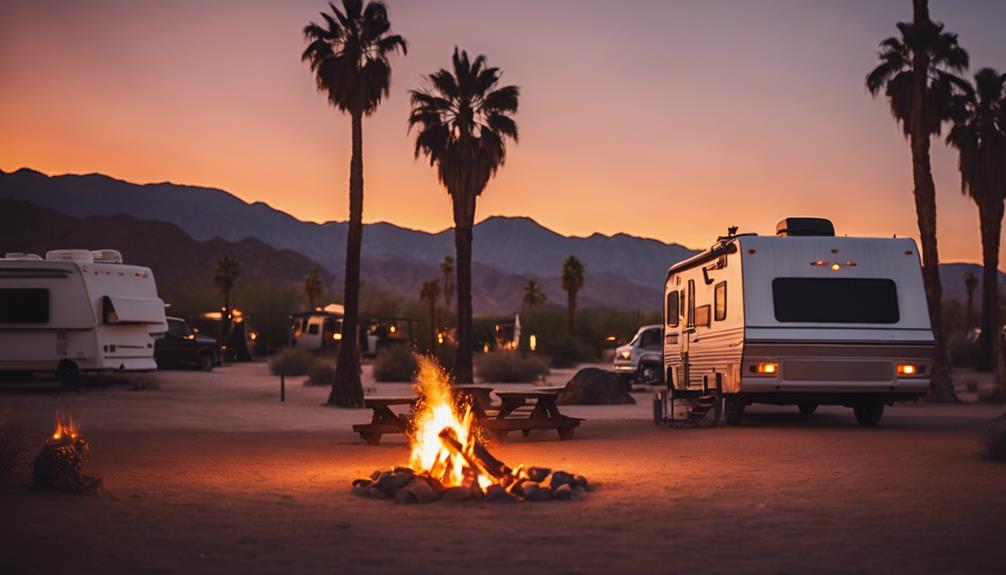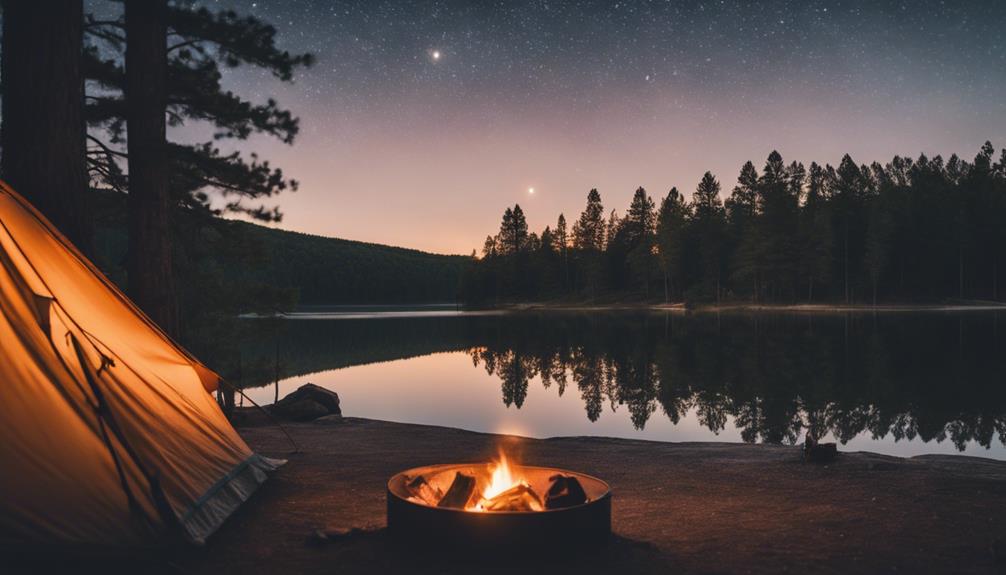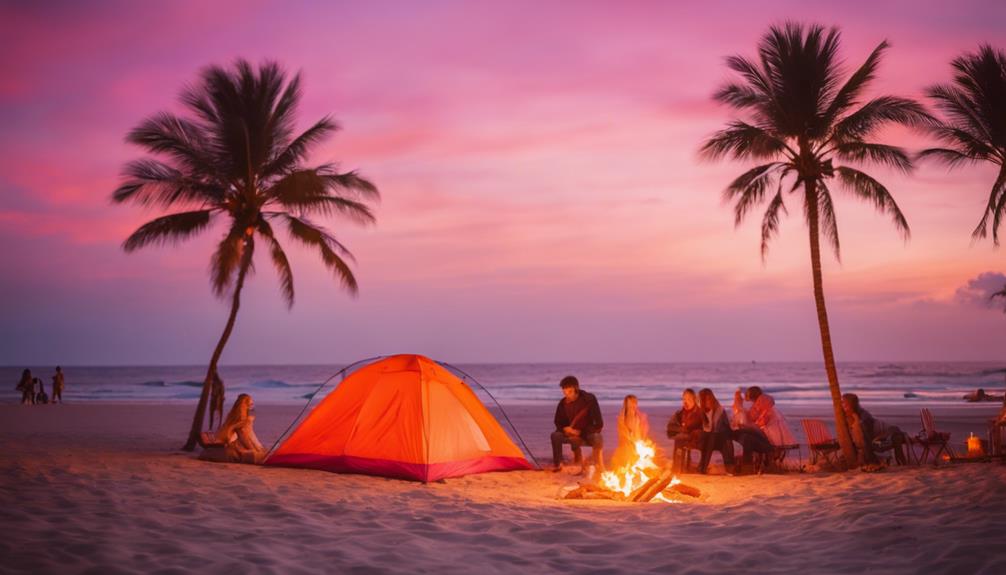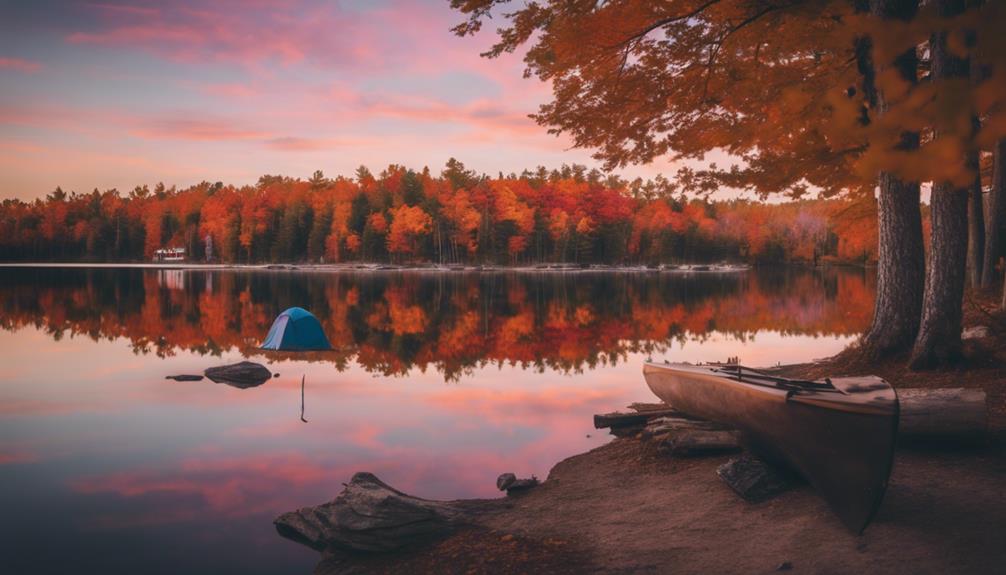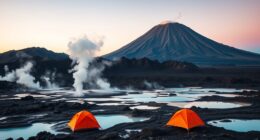To stay hydrated safely, use portable filters that physically remove bacteria and protozoa, offering rapid, reusable water purification during outdoor activities. For viruses or highly turbid water, incorporate chemical disinfectants like iodine or chlorine dioxide, which deactivate pathogens effectively. Combining methods enhances safety, especially in uncertain water sources. Proper maintenance of filters and correct chemical usage are vital for effectiveness. Explore these techniques further to guarantee you are fully equipped for safe hydration on your campouts.
Key Takeaways
- Use portable filters with pore sizes of 0.1-0.2 microns for quick removal of bacteria and protozoa during outdoor activities.
- Combine physical filters with chemical disinfectants like iodine or chlorine tablets for comprehensive pathogen elimination.
- Regularly clean and maintain filters to prevent clogging and ensure effective water purification.
- Be aware that filters alone may not remove viruses; consider chemical treatments for virus-prone water sources.
- Pre-filter turbid water to prevent clogging and improve the efficiency of both filters and chemical disinfectants.

When camping in remote areas, guaranteeing access to safe drinking water is essential for health and safety. Contaminated water sources pose significant risks, including gastrointestinal illnesses and other waterborne diseases. To mitigate these hazards, you need reliable purification methods that are both effective and practical for outdoor settings. Two primary approaches are portable filters and chemical treatments, each with distinct advantages and limitations that influence their suitability for different scenarios.
Portable filters operate through physical filtration, removing bacteria, protozoa, and particulates from water sources. These devices typically utilize porous membranes, ceramic elements, or activated carbon media to trap contaminants. Their efficacy depends on pore size; for instance, filters with pore sizes of 0.1 to 0.2 microns effectively eliminate bacteria and protozoa, which are common waterborne pathogens. The primary advantage of portable filters is their rapid processing time and the ability to produce clean water instantly, making them ideal for continuous use during extended trips. They are also reusable and environmentally friendly, provided proper maintenance is maintained. However, filters are limited in their ability to remove viruses, which are smaller than bacteria and protozoa, and they can clog over time, especially when used with highly turbid water. Regular cleaning and replacement of filter elements are necessary to sustain their efficacy. In addition, understanding the contrast ratio of your filtration device can help evaluate its ability to render clear images of the filtration process.
Portable filters remove bacteria, protozoa, and particulates quickly, but may struggle with viruses and clog in turbid water.
Chemical treatments, on the other hand, involve adding disinfectants such as iodine, chlorine dioxide, or water purification tablets to contaminated water. These chemicals chemically inactivate pathogens, including bacteria, viruses, and protozoa, making water safe to drink. Chemical treatments are lightweight, compact, and simple to use, which enhances their practicality for backpackers and emergency scenarios. They also have the advantage of being effective against viruses, which portable filters often cannot reliably remove. Nevertheless, chemical treatments require a waiting period—typically 30 minutes—to achieve ideal disinfection, and some individuals may find the taste and odor unpleasant. Additionally, chemical efficacy can be reduced by organic materials present in water, necessitating pre-filtration or clarification in highly turbid sources. Certain chemicals may also pose health concerns if used excessively or improperly, emphasizing the need for adherence to dosage instructions.
In practice, combining portable filters and chemical treatments offers a thorough approach to water purification. Pre-filtration can remove particulates, reducing the chemical demand and improving taste, while chemical disinfectants ensure inactivation of viruses and remaining pathogens. Selecting between these methods depends on the water source characteristics, trip duration, and personal preferences. For instance, if you anticipate turbid water with high particulate loads, using a portable filter first may be more effective, followed by chemical treatment for viral disinfection. Conversely, in clear water sources, chemical treatments alone might suffice. Ultimately, understanding the principles, strengths, and limitations of each method enables you to maintain safe hydration in remote environments effectively.
Frequently Asked Questions
Can I Use Bottled Water Instead of Purification Methods?
Yes, you can use bottled water instead of purification methods, but consider bottled water safety. Purification vs bottled involves evaluating the source and contamination risks. Bottled water is generally treated and tested, making it a reliable option. However, if you’re unsure of its source or if it’s stored improperly, purification techniques like boiling or filtration may be necessary to ensure safety. Always evaluate the water quality before relying solely on bottled options.
How Often Should I Replace Water Filters During Camping Trips?
Imagine you’re trekking through a remote forest, relying on your water filter. Typically, you should replace your filter every 100 to 200 gallons or as recommended by the manufacturer, based on the filter lifespan. Adhering to a consistent replacement schedule prevents contamination and guarantees peak performance. For example, if you’re filtering 10 gallons daily, replace the filter every 10-20 days to maintain safe drinking water during your camping trip.
Are Chemical Purifiers Safe for Children and Pregnant Women?
Chemical purifiers are generally safe when used properly, but you should consider chemical safety, especially for pregnant women and children. For pregnant women, consult healthcare providers because certain chemicals may pose risks. Always follow manufacturer instructions for dosage and contact time. Use high-quality purifiers with proven efficacy, and guarantee proper ventilation during application. When in doubt, opt for alternative methods like boiling or UV treatment to minimize chemical exposure risks.
What Are the Environmental Impacts of Water Purification Chemicals?
Like Pandora’s box, chemical purification can release environmental issues. These chemicals contribute to chemical pollution, contaminating soil and water sources. They can cause ecosystem disruption by harming aquatic life and degrading habitats. When you use chemical purifiers, you risk releasing residuals into the environment, which may accumulate and have long-term ecological effects. Careful management and choosing eco-friendly options help mitigate these impacts, preserving ecosystems for future generations.
Can Boiling Water Remove All Types of Waterborne Pathogens?
Boiling water is highly effective for pathogen removal, as it destroys most waterborne pathogens with sufficient boiling duration—typically one minute at sea level and three minutes at higher altitudes. Boiling effectiveness is well-documented for bacteria, viruses, and protozoa. However, it does not remove chemical contaminants or heavy metals, so if water quality is uncertain, consider additional purification methods. Proper boiling guarantees safe drinking water by eliminating the majority of biological pathogens.
Conclusion
Ensuring your water is safe is essential, even when it seems inconvenient. While some may doubt the effectiveness of portable purification methods, proper use guarantees removal of harmful pathogens and contaminants. Ignoring these precautions risks illness or dehydration, which can ruin your trip. By choosing reliable purification techniques and following instructions carefully, you protect yourself and your companions. Prioritize safety with diligent water treatment—because no adventure is worth risking your health over.



